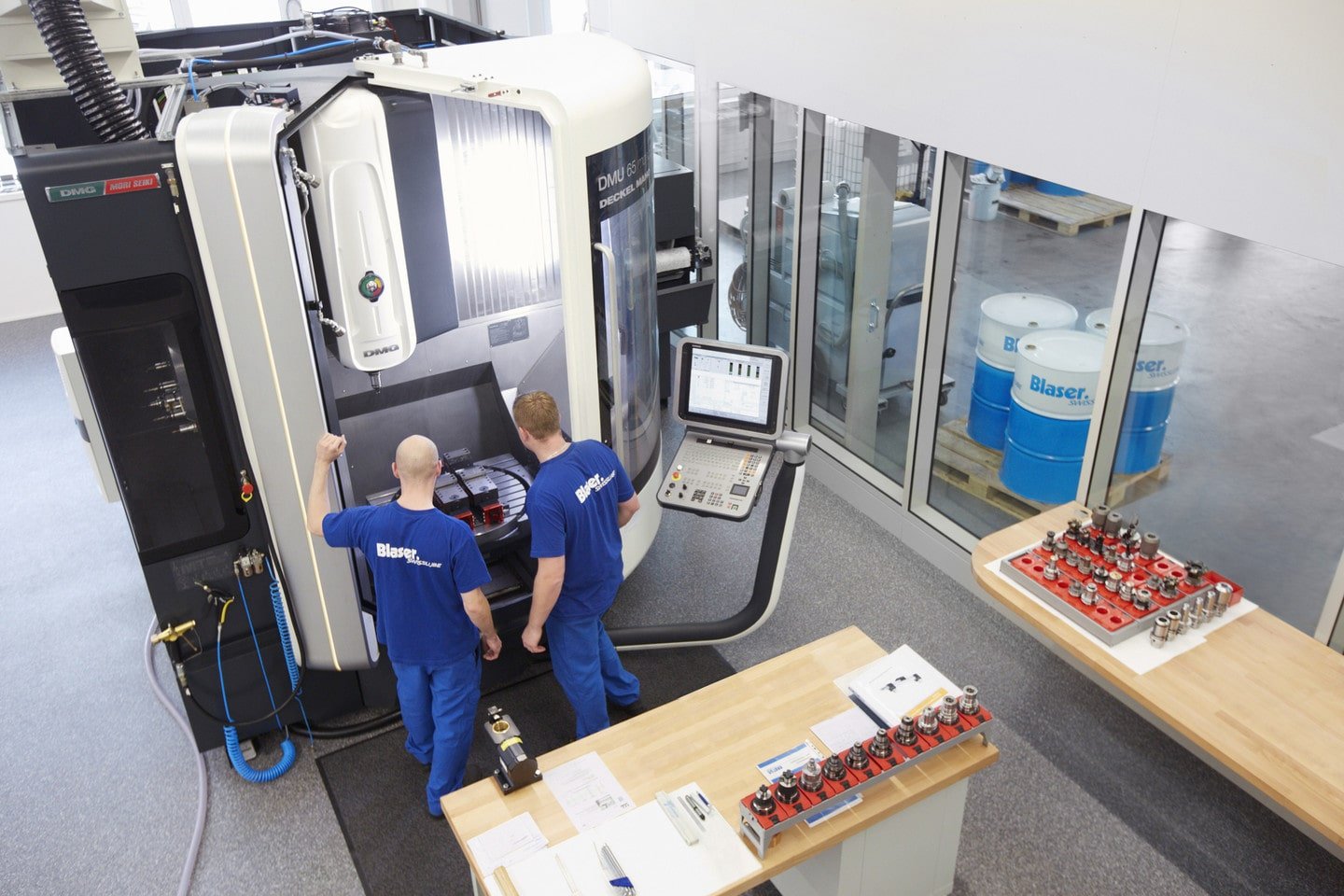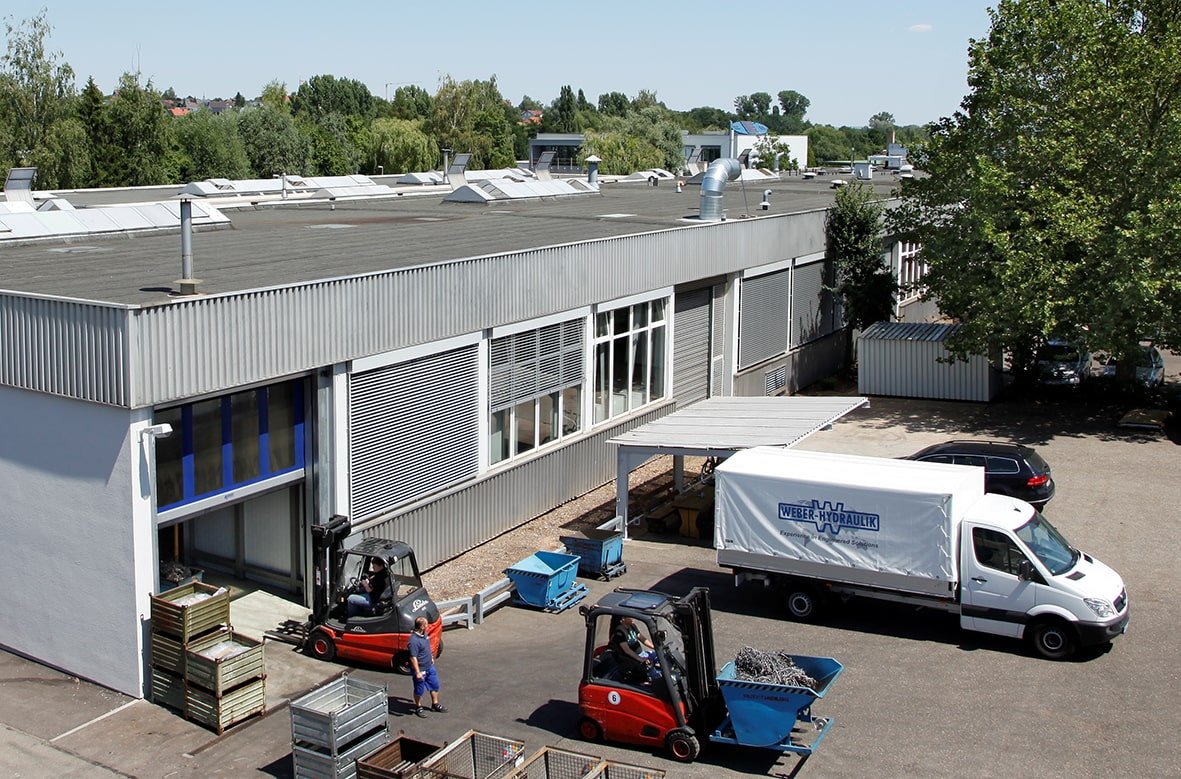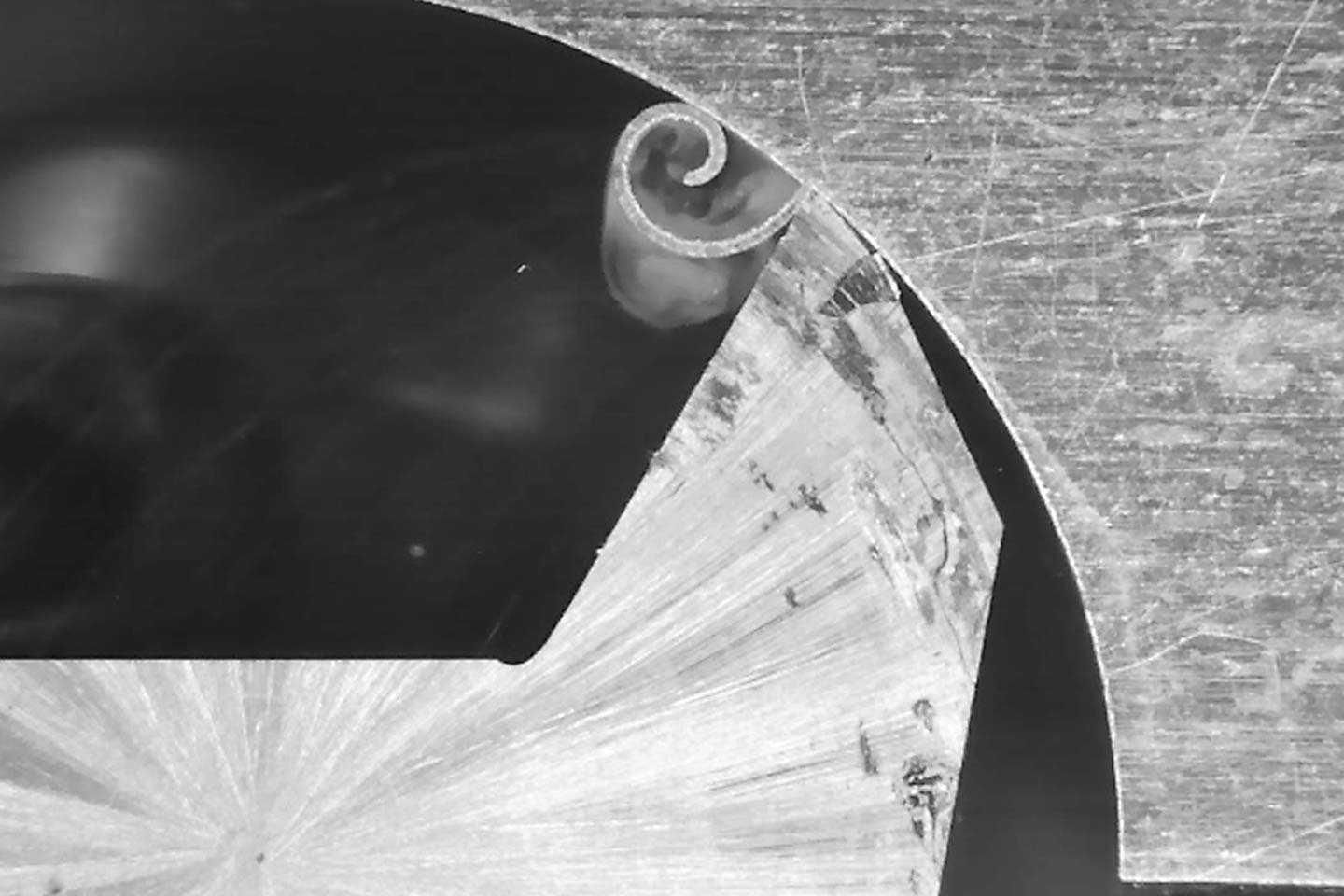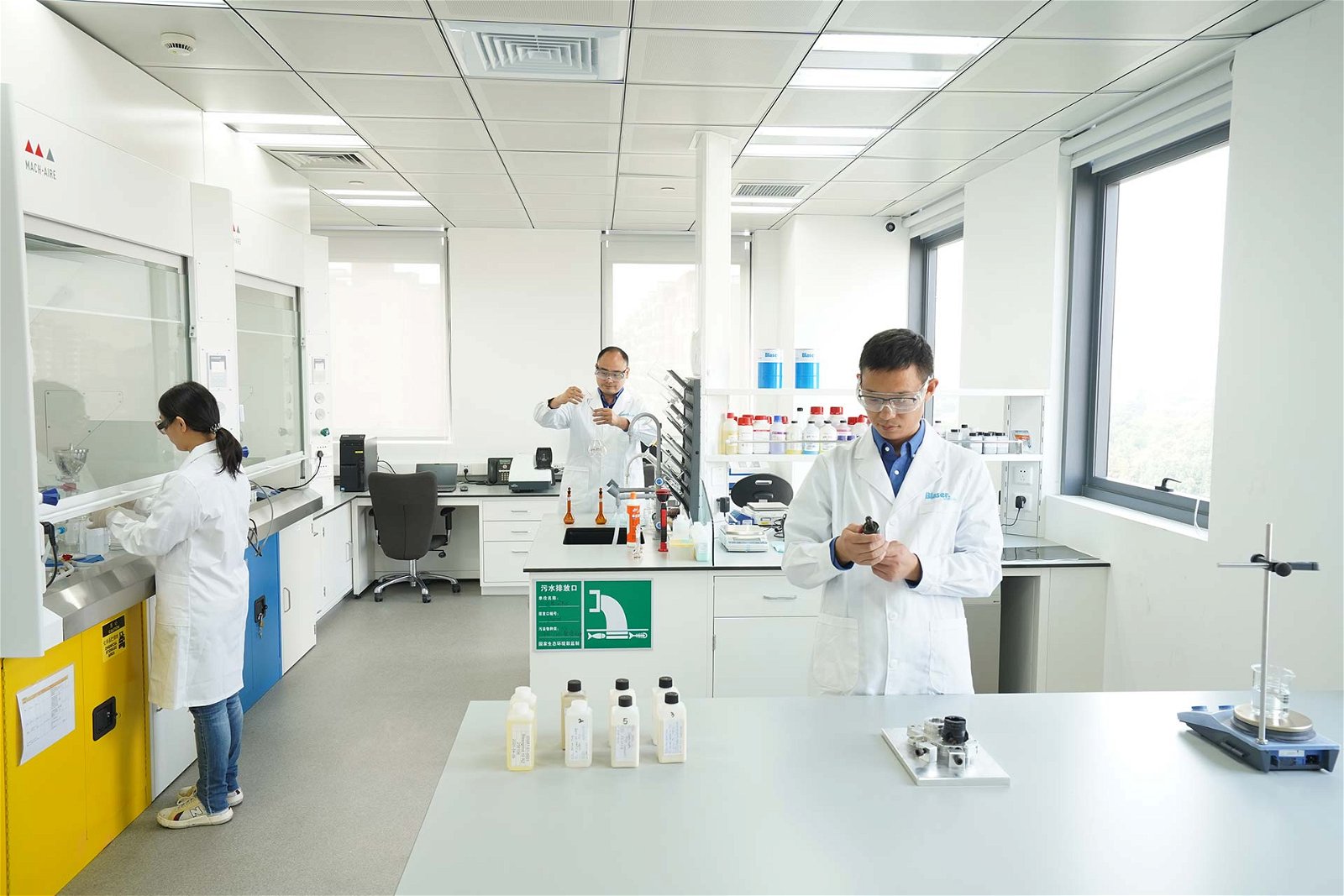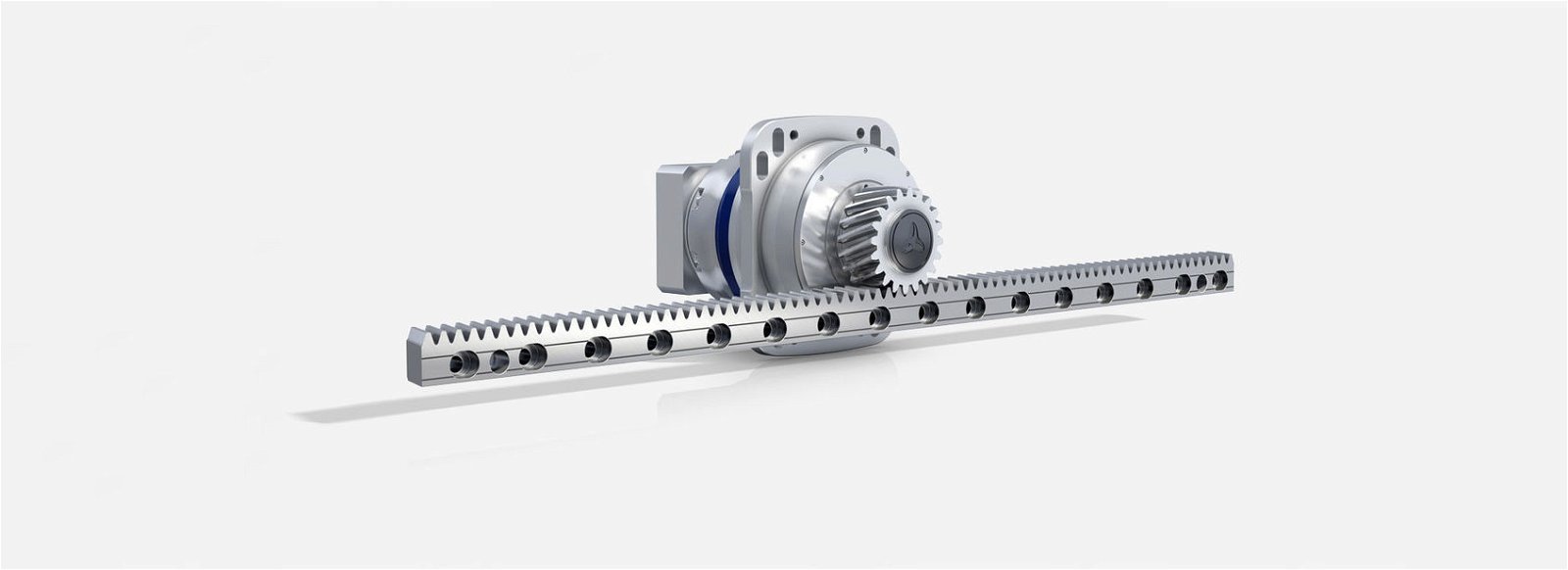Cutting and grinding fluid tests – performance comparisons among cutting and grinding fluids
Precise analysis using the microscope in the Blaser Swisslube Technology Center
My series explains which factors should be given special consideration when comparing cutting and grinding fluids. Having considered tool preparation and the right choice when replacing cutting and grinding fluids in the first two parts, the last part is about measuring performance and comparing different cutting and grinding fluids. What is particularly important when comparing sump life? All other factors, in addition to the cutting and grinding fluid, must be defined as precisely as possible. Good preparation is essential for reliable results and meaningful comparisons.
Procedure of the performance test
After the tools and cutting and grinding fluid have been prepared and checked, the performance test can begin. We machine material in our in-house Technology Center under clearly defined parameters until we have reached a predetermined flank wear, which marks the end of the sump life. We interrupt the machining process at fixed intervals, documenting the increase in tool wear using a microscope. It is essential that the machining conditions are always as identical as possible.

The procedure of a cutting and grinding fluid test in the Blaser Technology Center
To ensure reliable results, it is also important that the machining conditions are as good as possible. The main focus here is on clamping the workpiece, the tool and the machining strategy. Another essential factor is the pressure or the volume flow of the cutting and grinding fluid, which must be checked in advance to ensure consistency. Once all of these points have been checked, the test can begin.
What must always be taken into account when performing cutting and grinding fluid tests in metalworking companies?
1. Process analysis: The real difference between cutting and grinding fluids can only be reliably shown through a structured approach and the prior identification of possible influencing factors. Even the most minor differences in material quality or tools can seriously falsify a comparison.
2. Process selection: Make sure to choose a stable process for comparison purposes. Otherwise, the process variance can seriously falsify the accurate evaluation of the cutting and grinding fluids.
3. Splitting lots: It is best to split a larger production lot (material and tool lots are evenly divided between the cutting and grinding fluids). This ensures that the starting conditions are as similar as possible when comparing cutting and grinding fluids.
4. Selecting an evaluation criterion: It is now possible to make a comparison to establish which cutting and grinding fluid allows the tools to be used for longer. For this purpose, a clear criterion must be defined in advance, depending on the existing infrastructure. Either, for example, the same number of parts is manufactured and the tools are then precisely measured and compared. Or, another clear change criterion is defined (for example, defining a limit via load monitoring) and then the number of pieces produced is compared.
5. Repetition: During our experiments, our motto is: testing once is no test at all. For this reason, we always carry out at least three tests in our processes in order to estimate the spread of the results. In metalworking companies, the number of tests depends on the lot sizes. The following principle applies: the more tools are used at the end of sump life, the better the statistical significance of the result.
Sump life comparison – determining tool wear

Tool at the end of sump life
With a well-coordinated process, sump life is limited by the wear on the flank. This constitutes natural tool wear. If tools chip significantly or break spontaneously, the process must be checked.
In our precisely defined tests at the Technology Center, the tools are carefully examined under our microscope at set intervals and the wear on the flank surface is precisely determined. In most cases the wear limit is 0.2 to 0.3 mm. This corresponds roughly to the width of three to four hairs laid side-by-side. This is comparatively little, but afterwards spontaneous and irregular break-outs and chipping increase sharply. In an industrial context, this means poor process reliability and leads to rejects.
Can you measure tool wear for yourself?
If you do not have a microscope in your workshop to compare the tools, sump life can also be limited by monitoring the machine’s load. This option is particularly suitable for roughing operations – processes involving small forces are not suitable for this.

Example of tool monitoring using an app on DMG MORI’s Celos user interface with a Siemens controller, picture source:https://ch-de.dmgmori.com/produkte/digitalisierung/production/technologiezyklen/easy-tool-monitoring-2-0
Other important criteria
Performance is undoubtedly important, but it shouldn’t be the only factor analyzed when comparing cutting and grinding fluids. “Soft” factors are also very important for the machine operator to ensure satisfaction with the cutting and grinding fluid used. These include, for example, foaming, which must be taken into account, especially in high pressure applications, as well as the stability and the resulting sump life of the emulsion. The cutting and grinding fluid sump life can have a major impact on operating costs. The frequency, concentration and quantity of topping-up (supplementing with fresh emulsion to maintain the level and target concentration) also have a significant impact on operating costs. Human compatibility (odor, skin compatibility, misting, toxicity) as well as machine compatibility (corrosion protection, compatibility with seals, paints, etc.) must be taken into account.

